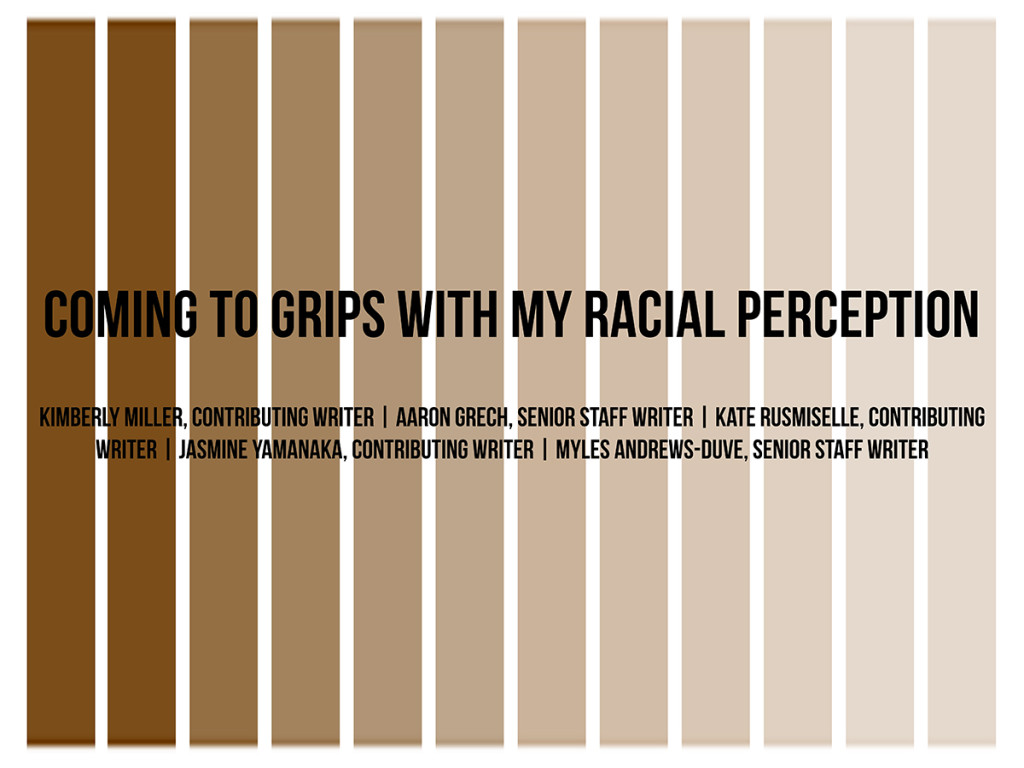
Sometimes I thought of the other children in my kindergarten class as colors of the rainbow. Of course, I knew at the time that all of my classmates had their own distinct combination of hues, whether they be different shades of hair color, skin color or eye color. However, for the most part, all of my kindergarten peers were composites of the seven colors of the rainbow: ROYGBIV.
What made me think of Rajan as blue and Maxwell as violet was this unanimous acknowledgement of identity similar to that of a basic color. All of the other children in my class knew that Rajan was Indian just as they knew that a crayon was blue at first sight. Rajan never knew what it felt like to have people ask him what he was because he was one of the seven colors of the rainbow.
I, on the other hand, was an outlandish mixture of red and indigo that no one seemed to know the name of. I myself didn’t know the name of my color because there were no crayons that were in my shade. When people asked me “What are you?” I simply responded, “I think my mom is Chinese.”
When I was in middle school, no one would take me in. There were white kids, Asian kids and Latino kids. I tried to assimilate into each one of these three main groups at some point in my middle school career; however, I always sat on the edge of the table in all of these groups, and after lunch, I wondered why I walked to class alone while everyone else had someone to walk with.
Sixth grade was the year I took my chances with the Asian kids, who had their own designated table at the far right corner of the cafeteria. I thought they liked me because I was younger and smaller like a little sister, and because my last name is Japanese. (At that point, I had figured out that I was one-half Chinese, one-quarter Japanese and one-quarter German; I thought that my ethnicity would be important to know considering the cultural landscape of the social scene at my school.)
One day, a Chinese seventh-grader from the table named Kyle challenged me to a game of “Who is more Asian?” I took on the challenge, only to lose to Kyle in every question, from “How many animes have you watched?” to “What is your favorite Asian drink?”
Following the incident, I considered why they only challenged me to that game. Growing up celebrating Chinese holidays, speaking Chinese to my grandparents and following many other traditions that I value as a part of my culture, I identified with being Asian as much as everyone else at the table did, yet they centered the question on me just because I did not look like them. I never sat at the table again after that day, and I was never able to fully identify with the ethnicity-based social groups that carried on into high school either.
Interestingly, however, I was provided with a feeling of distinction because of my cultural obscurity. I wasn’t confined to a label. There was no need to join a group just because I was the same ethnicity as the people in it. My friends were people who I liked and cared about, and there was nothing beyond that which served as a “condition” to our friendship. Growing up mixed-race allowed me to establish an identity completely independent from my ethnicity.
I will never be a color of the rainbow because no one will ever know what color I am just by looking at me. However, I feel a stronger sense of self-identity being ethnically ambiguous because I have my own special color whose name is Jasmine Keiko Yamanaka.








